Abstract
A classwide peer tutoring procedure was implemented in an urban elementary school classroom to improve students' spelling performance. Three students combined untrained or collateral tutoring behaviors with the core behaviors initially taught. To explore the function of these natural and spontaneous behaviors, a multielement single-subject experiment with replications was conducted. Results indicated that the additional tutoring behaviors increased (a) the academic response frequencies of 3 tutees and (b) the weekly spelling achievement of 1 target tutee. The remaining class members were successfully taught and continued to use these behaviors over the final 3 weeks of the school year. These findings are discussed with regard to academic instruction, natural communities of peer reinforcement, and the social validation of intervention procedures.
Full text
PDF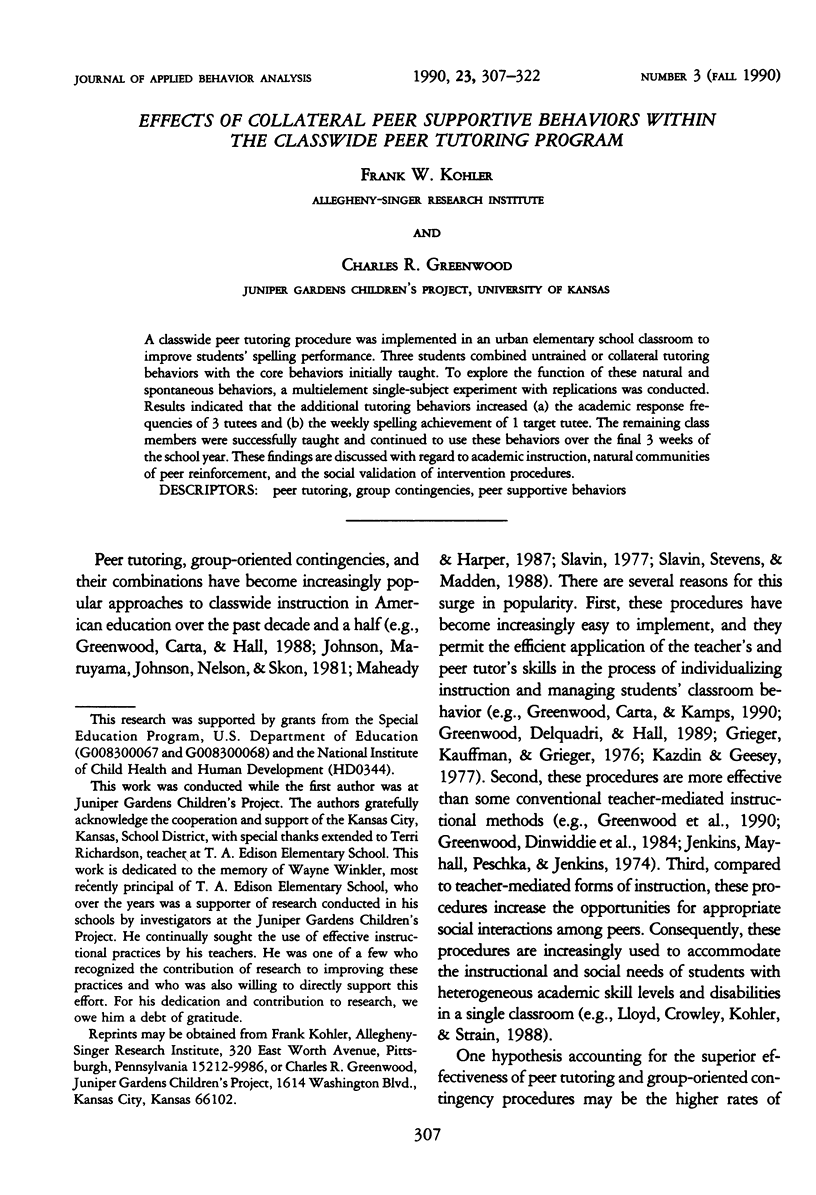
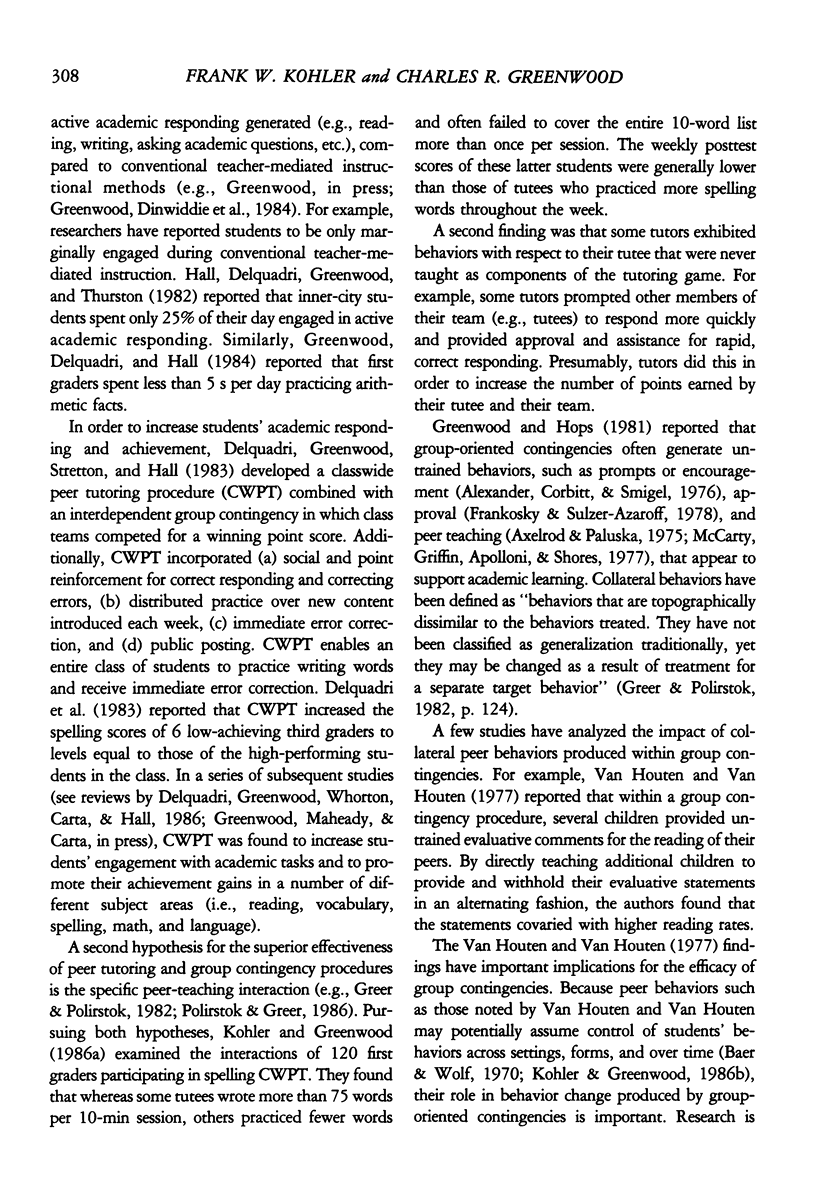
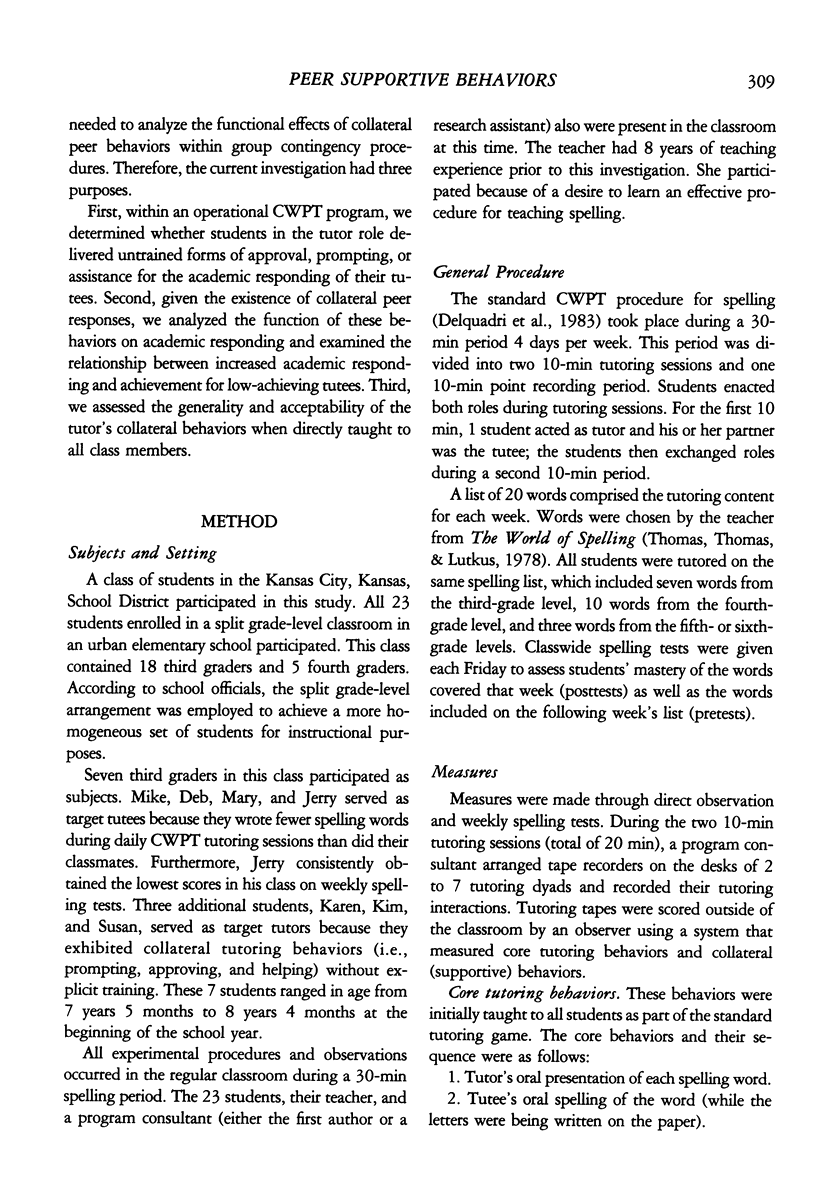
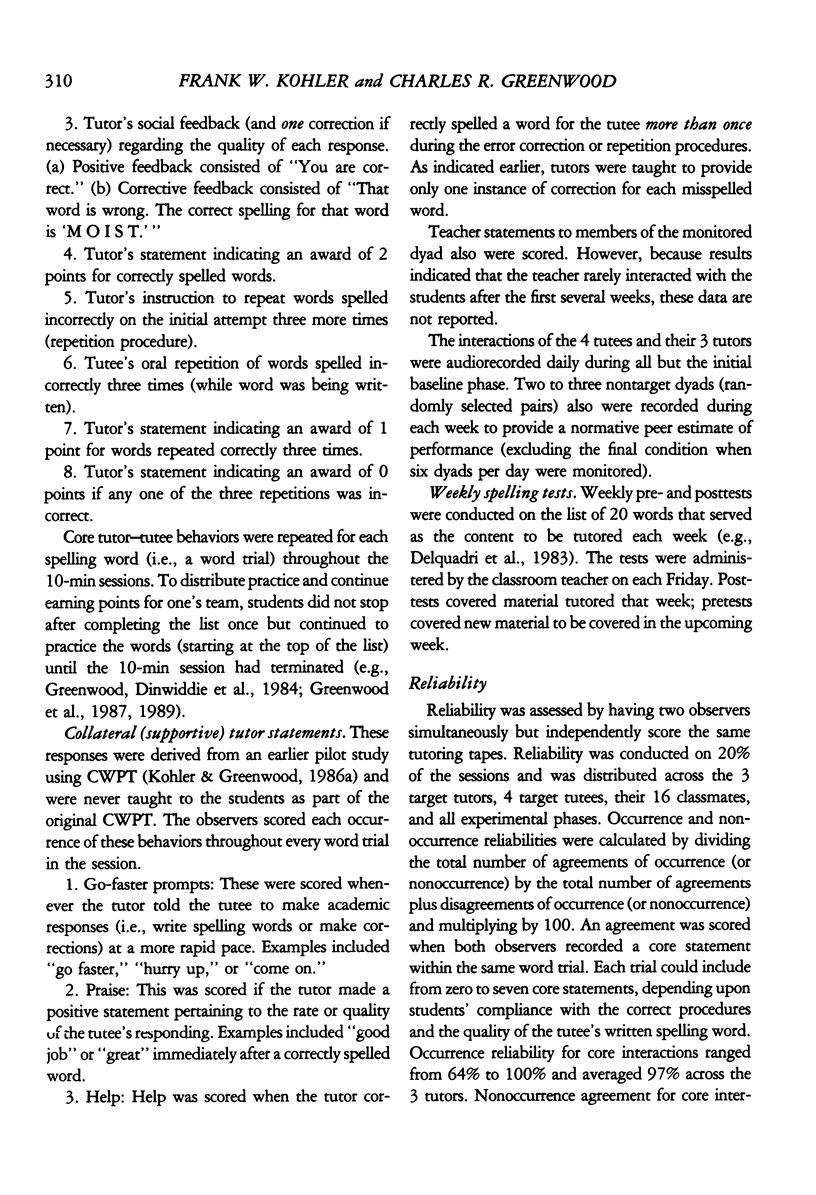
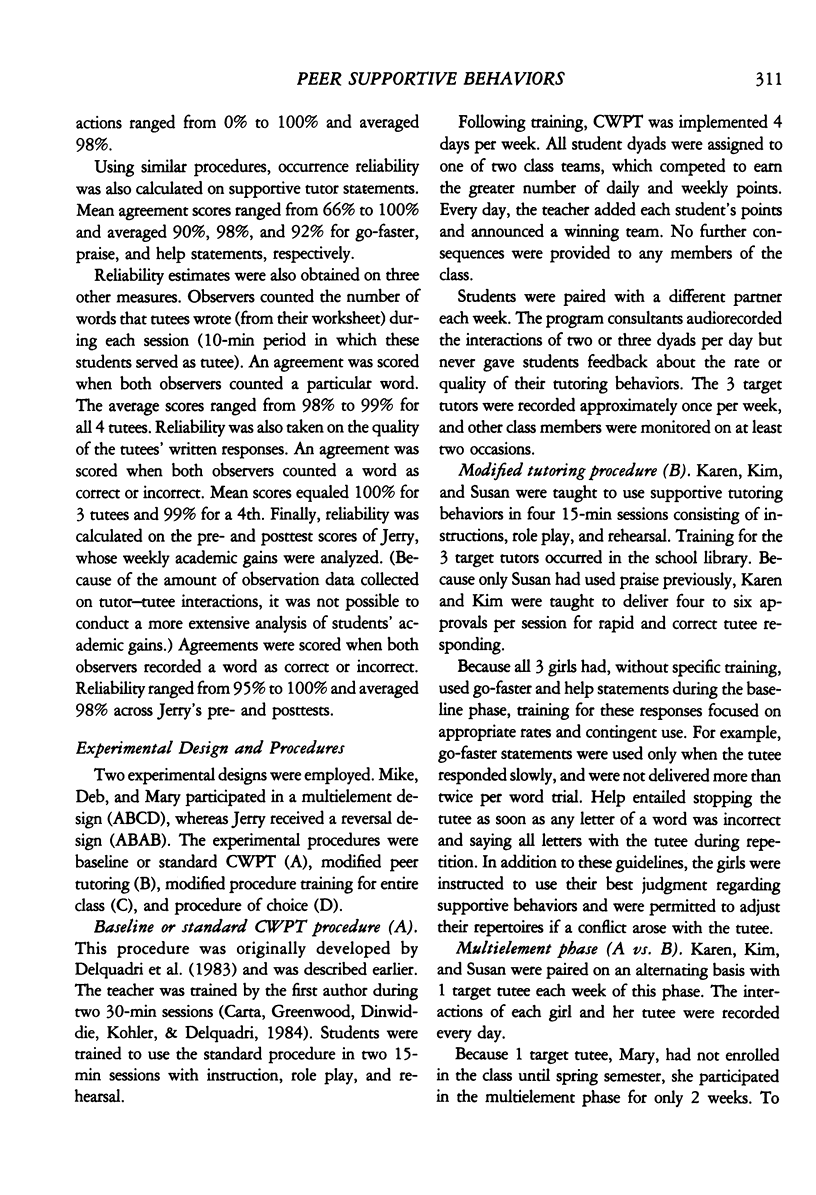
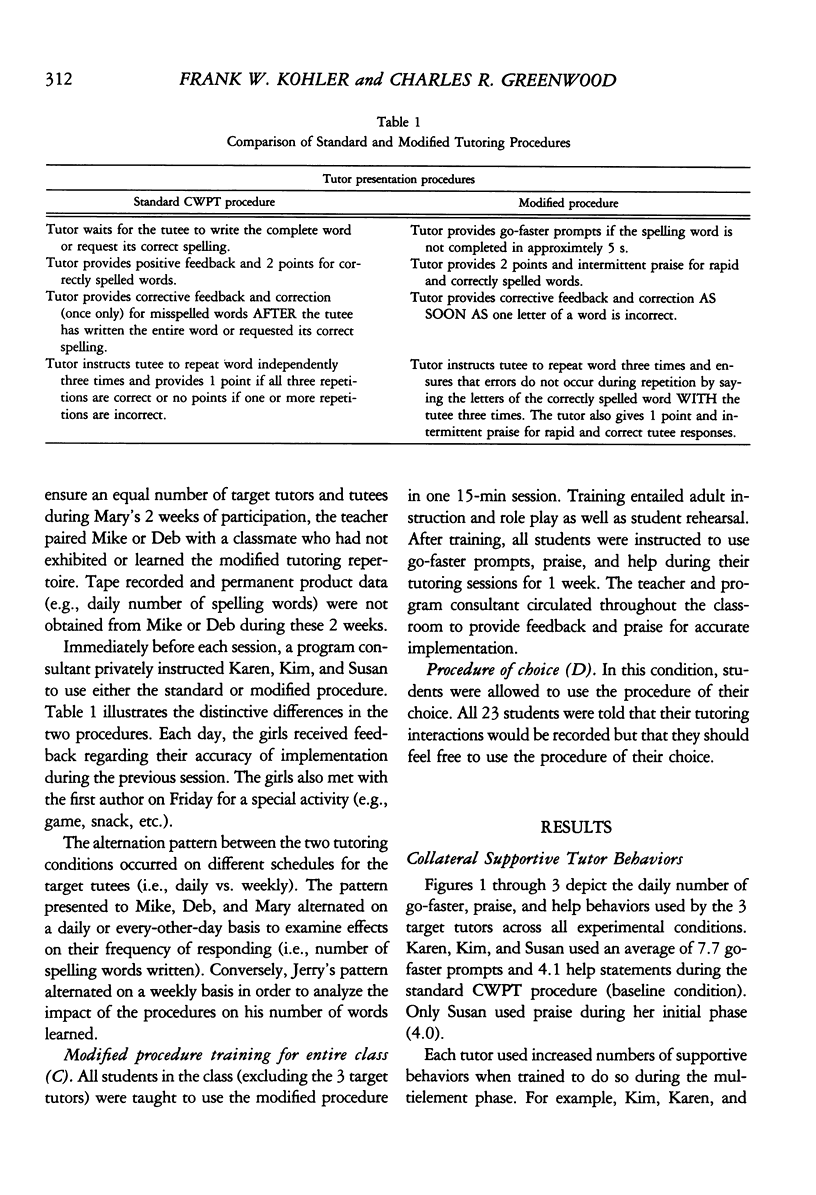

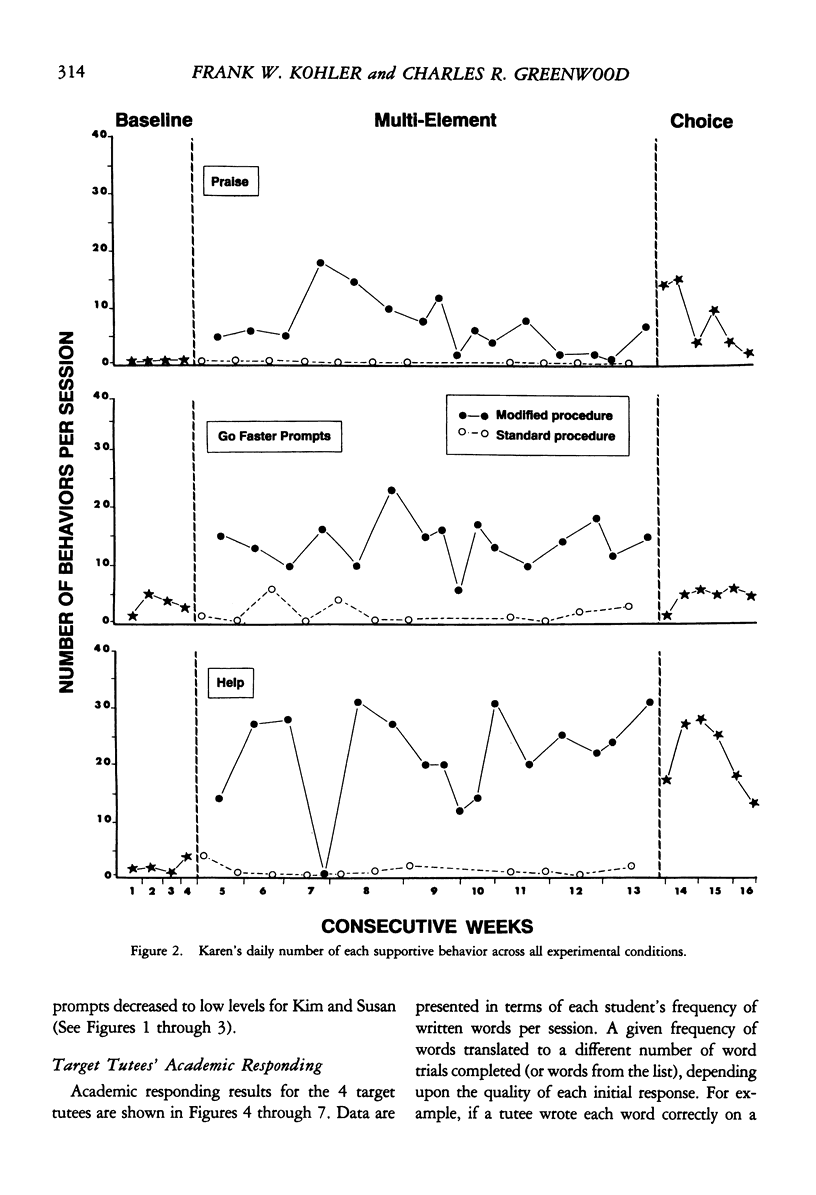
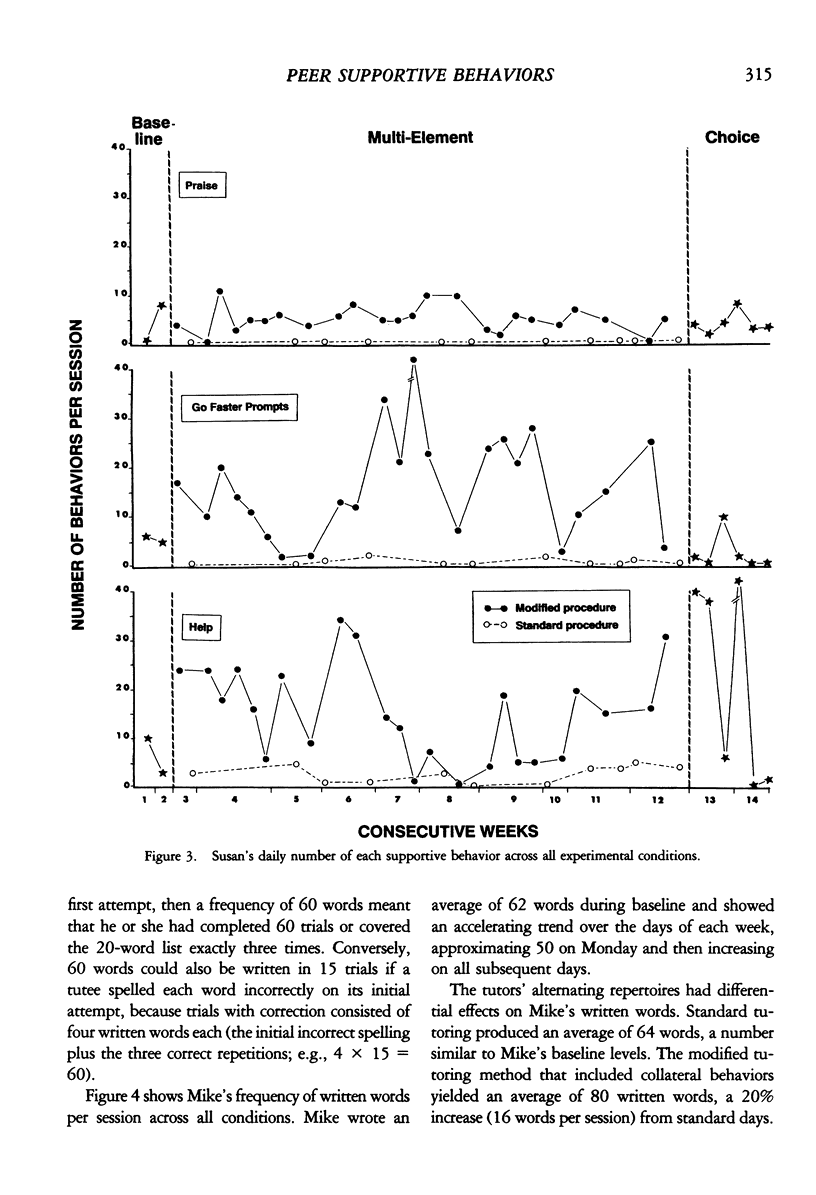
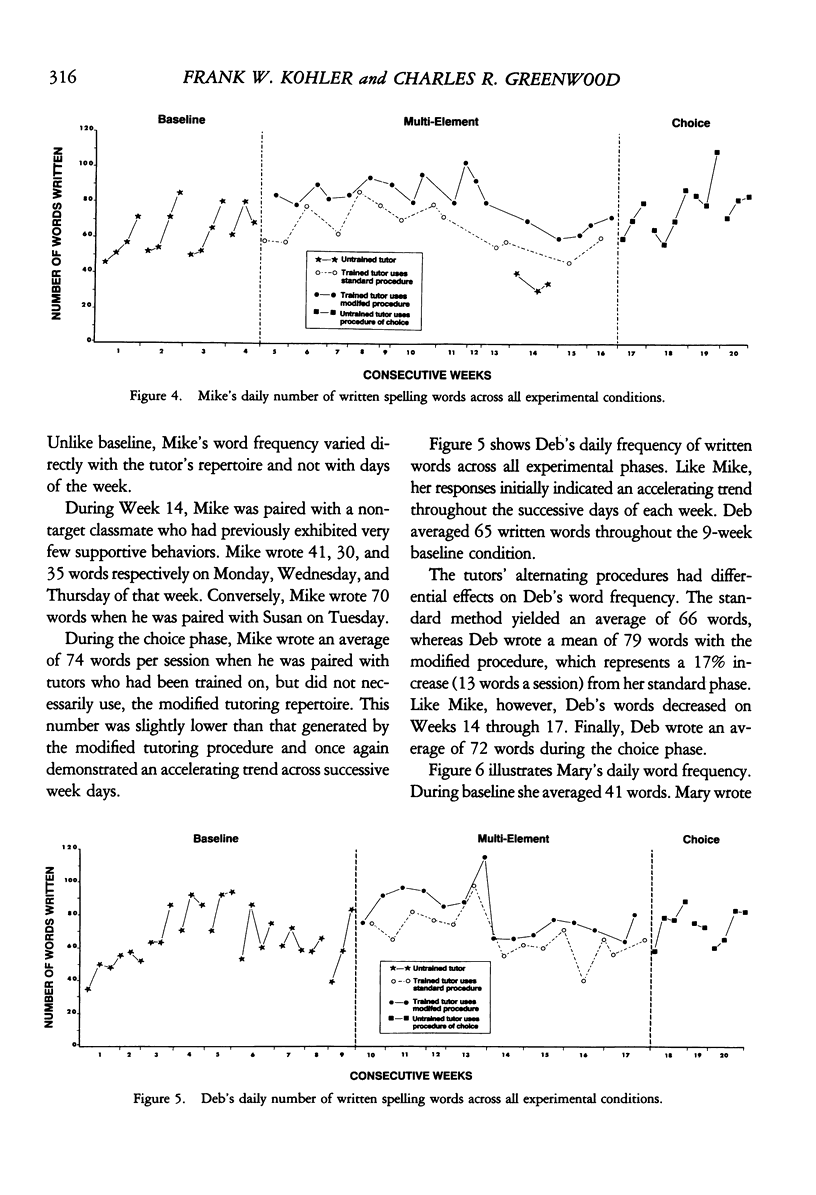
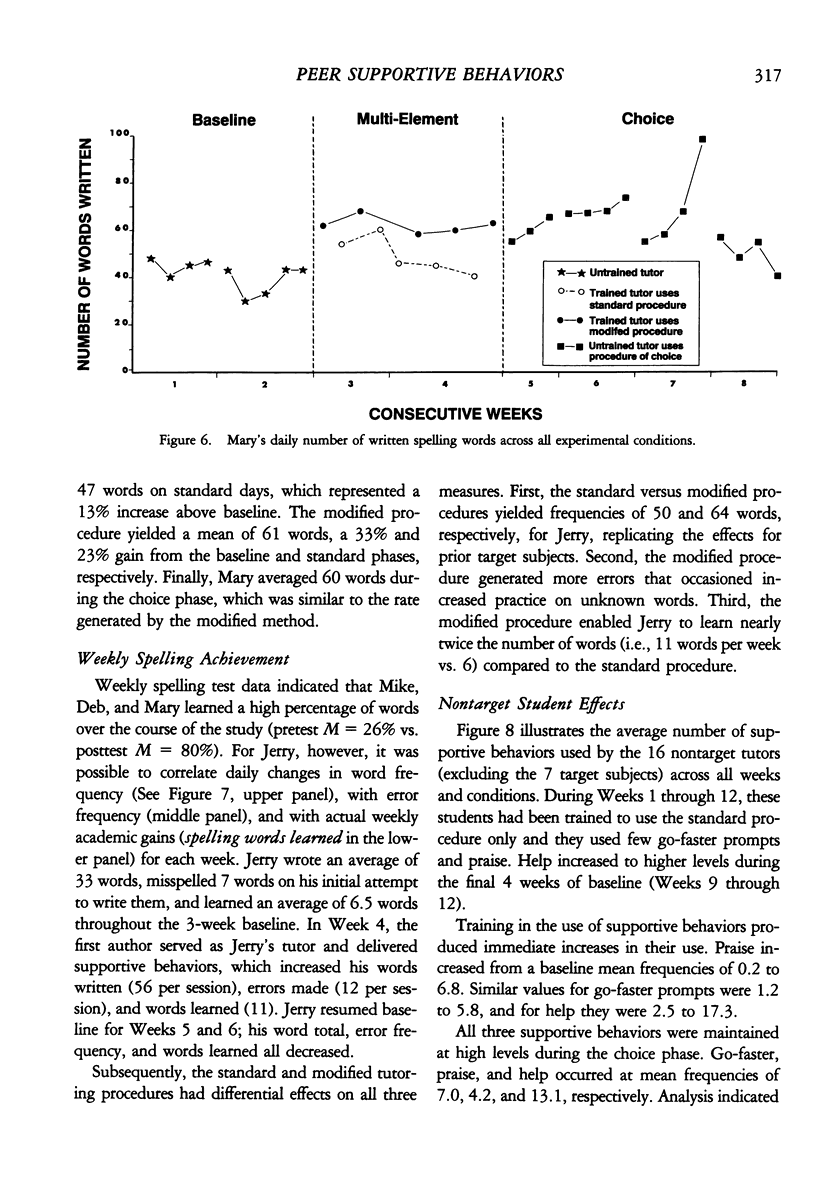
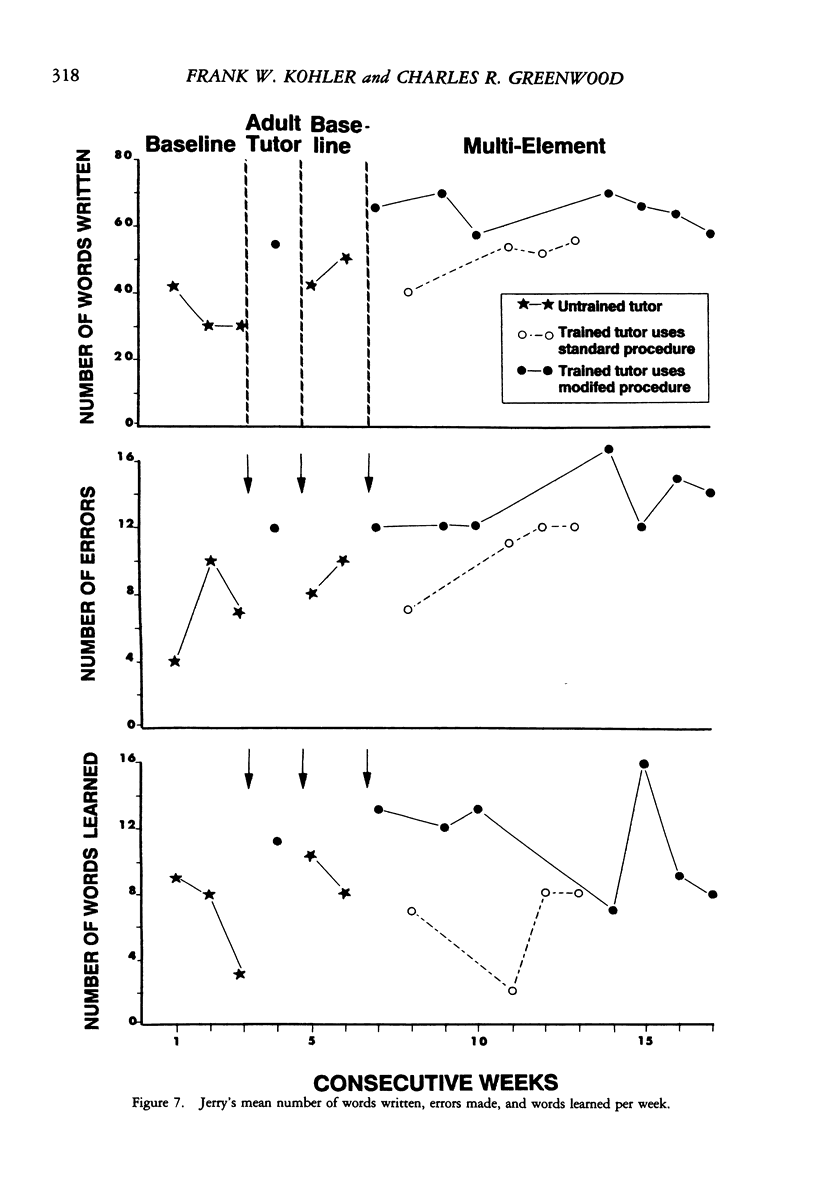
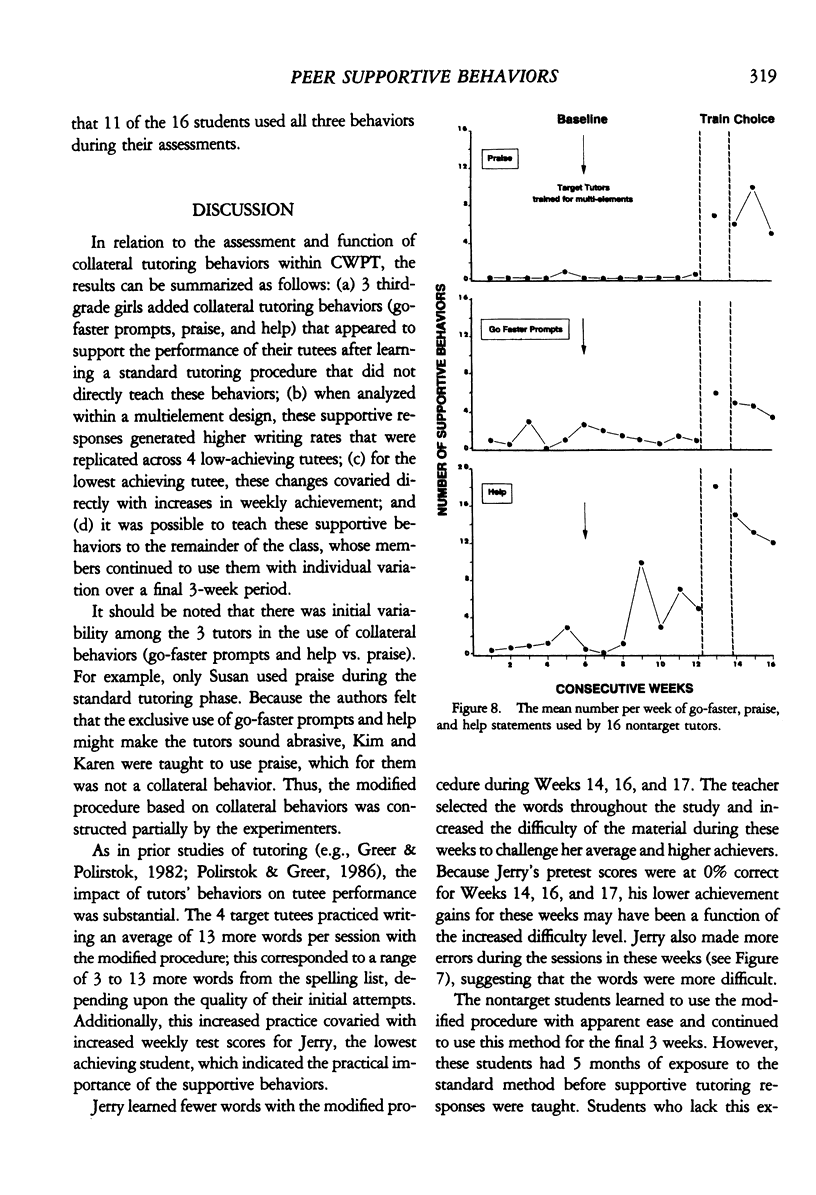
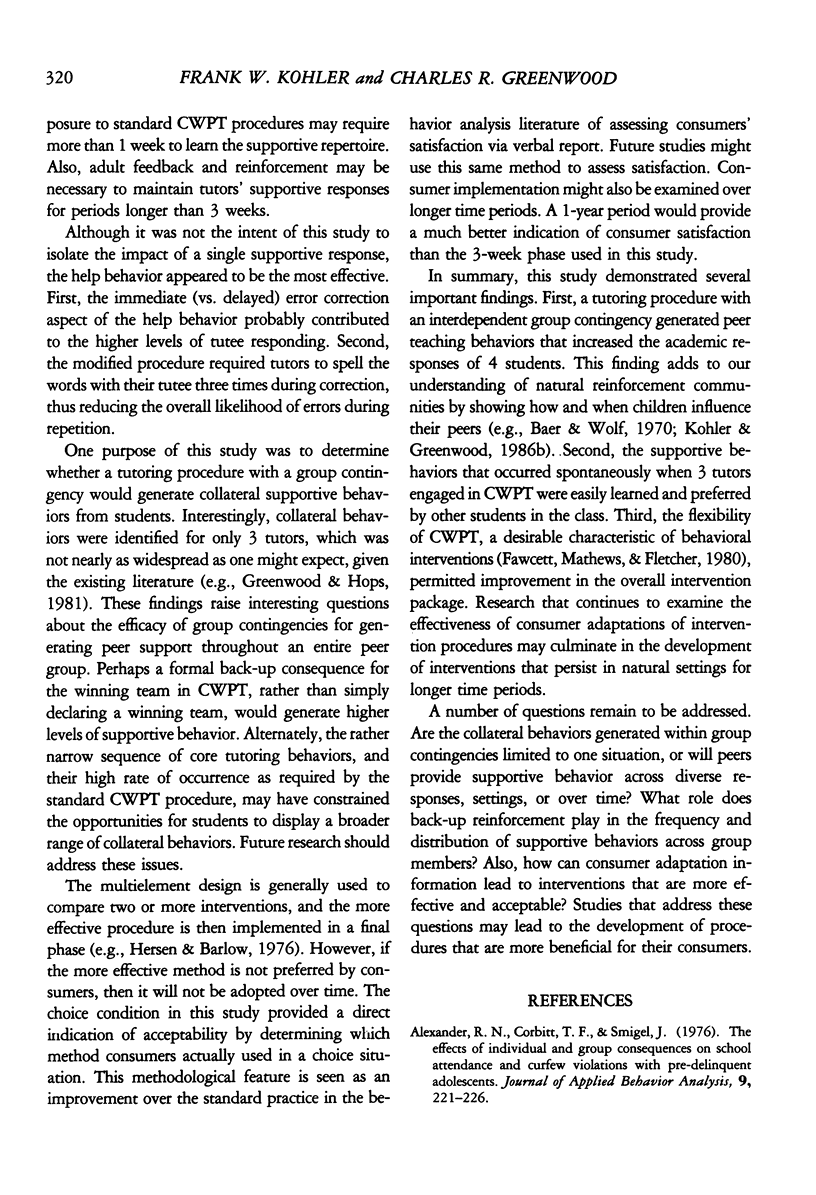
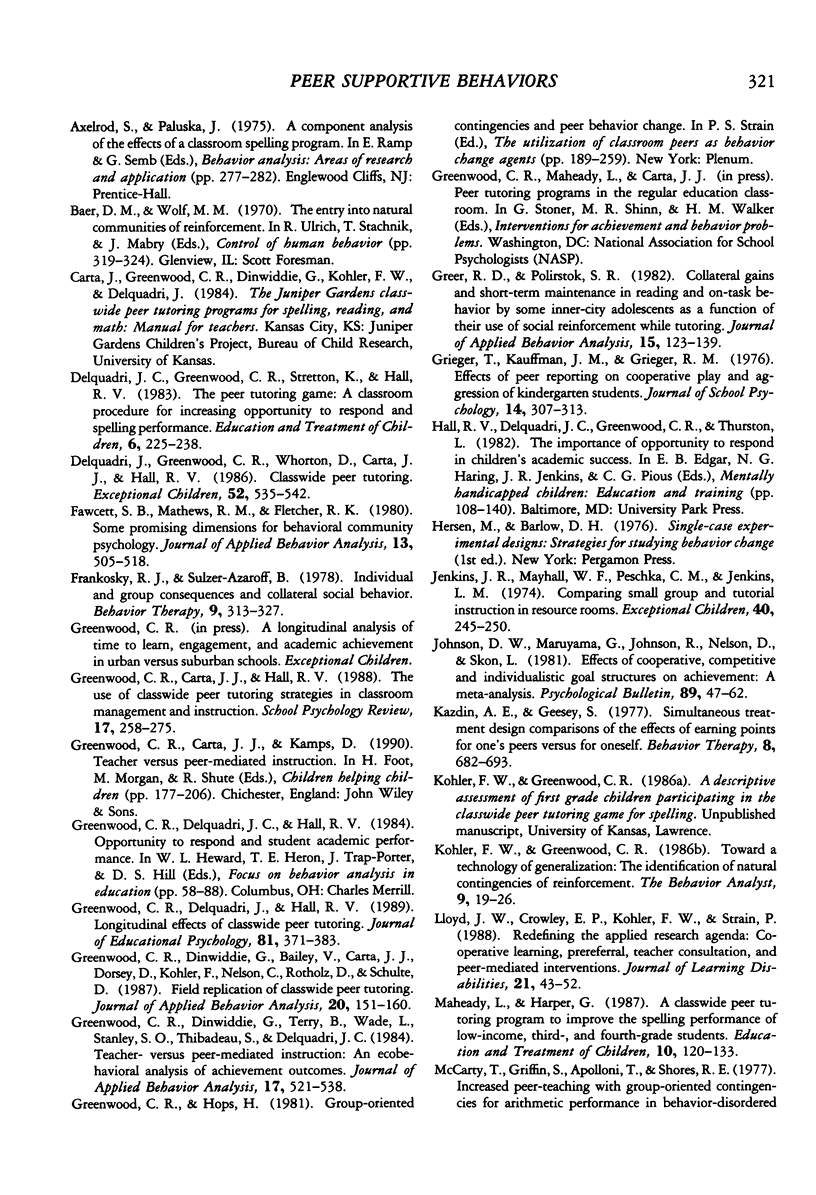
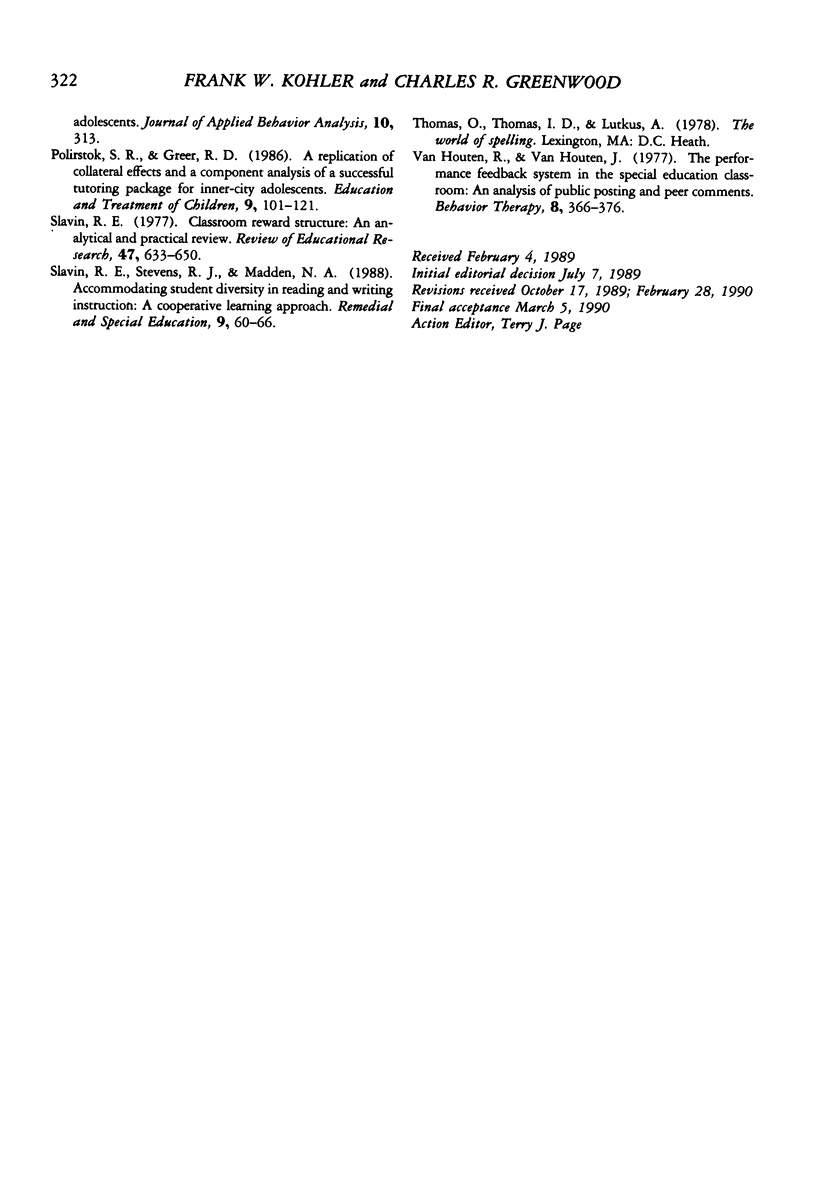
Selected References
These references are in PubMed. This may not be the complete list of references from this article.
- Alexander R. N., Corbett T. F., Smigel J. The effects of individual and group consequences on school attendance and curfew violations with predelinquent adolescents. J Appl Behav Anal. 1976 Summer;9(2):221–226. doi: 10.1901/jaba.1976.9-221. [DOI] [PMC free article] [PubMed] [Google Scholar]
- Delquadri J., Greenwood C. R., Whorton D., Carta J. J., Hall R. V. Classwide peer tutoring. Except Child. 1986 Apr;52(6):535–542. doi: 10.1177/001440298605200606. [DOI] [PubMed] [Google Scholar]
- Fawcett S. B., Mathews R. M., Fletcher R. K. Some promising dimensions for behavioral community technology. J Appl Behav Anal. 1980 Fall;13(3):505–518. doi: 10.1901/jaba.1980.13-505. [DOI] [PMC free article] [PubMed] [Google Scholar]
- Greenwood C. R., Dinwiddie G., Bailey V., Carta J. J., Dorsey D., Kohler F. W., Nelson C., Rotholz D., Schulte D. Field replication of classwide peer tutoring. J Appl Behav Anal. 1987 Summer;20(2):151–160. doi: 10.1901/jaba.1987.20-151. [DOI] [PMC free article] [PubMed] [Google Scholar]
- Greenwood C. R., Dinwiddie G., Terry B., Wade L., Stanley S. O., Thibadeau S., Delquadri J. C. Teacher- versus peer-mediated instruction: an ecobehavioral analysis of achievement outcomes. J Appl Behav Anal. 1984 Winter;17(4):521–538. doi: 10.1901/jaba.1984.17-521. [DOI] [PMC free article] [PubMed] [Google Scholar]
- Greer R. D., Polirstok S. R. Collateral gains and short-term maintenance in reading and on-task responses by inner-city adolescents as a function of their use of social reinforcement while tutoring. J Appl Behav Anal. 1982 Spring;15(1):123–139. doi: 10.1901/jaba.1982.15-123. [DOI] [PMC free article] [PubMed] [Google Scholar]
- Lloyd J. W., Crowley E. P., Kohler F. W., Strain P. S. Redefining the applied research agenda: cooperative learning, prereferral, teacher consultation, and peer-mediated interventions. J Learn Disabil. 1988 Jan;21(1):43–52. doi: 10.1177/002221948802100108. [DOI] [PubMed] [Google Scholar]
- doi: 10.1901/jaba.1977.10-313. [DOI] [PMC free article] [Google Scholar]


